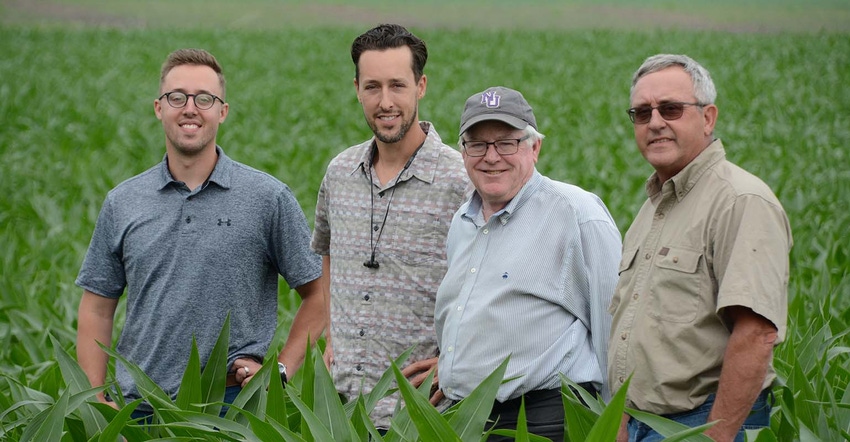
What does it take to make a harvest equipment share agreement work?
If you ask eastern Iowa farmers Bob, Jay and Dillon Buline and neighbor Bill Furlong, the answer is easy: Trust. And simplicity.
So simple in fact, there is no signed contract – something of an irony considering Furlong is a lawyer by trade.
Furlong grows 1,800 acres of corn and soybeans near Muscatine, Iowa; together he and the Bulines harvest 5,000 acres of grain each fall. Furlong provides a combine, two grain heads, two grain carts, a tractor, and an employee. The Bulines provide a combine, tractors, an auger cart, four semitrucks, and four drivers.
When the Bulines haul Bill’s grain, he pays the going rate. When the Bulines harvest their own acres they use their semis; Bill will occasionally use a local elevator’s trucks as well. Most of the farms are within 20 miles of the Bulines’ farm or local elevator.
The deal is structured so that at the end of the year, “if Bill owes us or we owe him it’s based on hours on the combine, going off Iowa State custom rates,” says Bob, Dillon and Jay’s father. Whoever owns the machine handles repairs and maintenance.
“We track how many acres each person did for the other,” adds Furlong. “Then you take the difference, times $35 per acre, and pay each other as needed. “The custom rates on grain carts is roughly $5 an acre; without providing an employee it’s $2.50 an acre. With trucking, we go off local rates.
“So, it’s not a partnership but really just an informal agreement.”
The savings are pretty straightforward. The Bulines can harvest 3,200 acres and own just one combine. And Furlong, with the smaller of the two operations, saves through greater harvest efficiency.
“Collaboration will be a key for a lot of businesses,” he says.
As other farmers ponder such agreement, one of the first questions is, who gets harvested first?
“On soybeans we’ve gone back and forth but we try to get a bunch done in one area,” says Furlong. “For corn I plant early maturing hybrids, so we’ll do a vast amount of my corn first. Of course, each of us wish we were doing our own first, but it’s not a problem. Sometimes it’s just based on weather.”
Mutual trust
Is there a written agreement? “We did at first two years ago and since then, we said, if it works, fine, and if it doesn’t, let’s not walk away mad at each other,” explains Furlong. “Two thirds of the way into the first season we decided we didn’t need anything in writing.”
Dillon says the Bulines want a sound business relationship “built on mutual trust.” For Furlong the feeling is mutual. He says he doesn’t really want or need a signed deal.
“Contracts are fine, but if you don’t need them, you don’t need them,” he says.
“Our business is based on trust,” adds Jay. “And it comes down to good communication, which allows us to build that trust. If Bill just said, go take care of my crops and he didn’t hear from us, it would be a problem.”
Furlong agrees. “My brother, a practicing attorney, was shocked to learn that business at the farmer level is most often based on trust.”
About the Author(s)
You May Also Like






